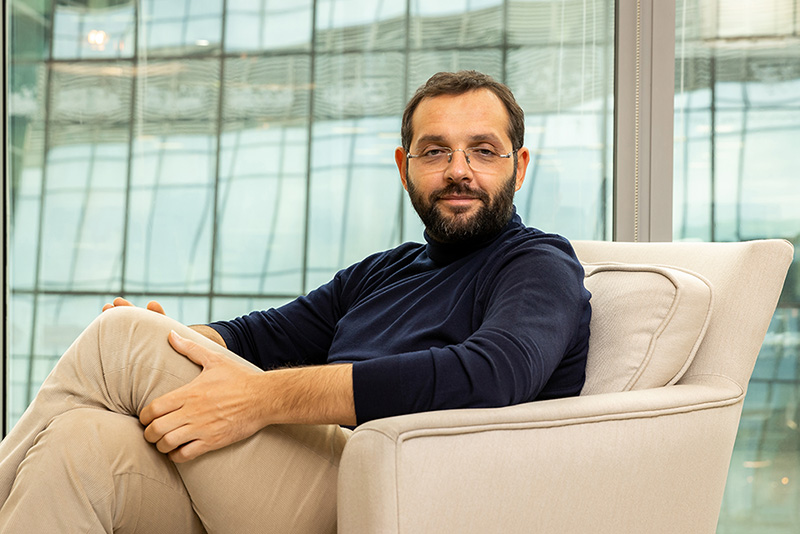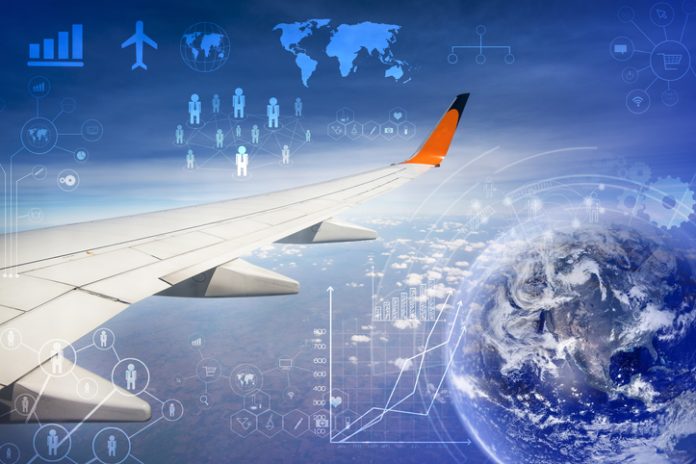By Irakli Litanishvili, co-founder & CEO of Mirai Flights
The popularity of private aviation has soared in the wake of the global pandemic. As passengers have needed alternatives to traditional commercial flights, they’ve begun to turn to charter flights in unprecedented numbers.
While this is excellent for the private jet industry, it comes with its own challenges, particularly in the environmental arena. One of people’s main concerns about flying private is the additional carbon footprint that often follows these flights.
The aviation industry as a whole is under serious pressure to tackle the issue of carbon emissions, and it’s common to hear of environmentalist protests citing “ultra-polluters” like private jets as the main issue.
Currently, the entire aviation industry accounts for about 2.5 percent of global carbon emissions. That number is projected to triple by 2050, so the industry must develop viable solutions.

What’s Next? Should We Ground Planes?
One proposition that some propose is, of course, to just reduce the availability of flights. However, this is a non-solution because we cannot just suddenly tell people they’re not allowed to fly at their convenience.
The facts about carbon emissions are clear. Carbon dioxide emissions have increased 400 percent since 1950, and it’s true that a single customer flying a private jet is quite unsustainable when it comes to a carbon footprint. Another idea such as adding electric vehicle only private airport transfers could make the process of aviation post travel more eco-friendly.
To offset this, some companies offer a solution that allows customers to pay for a comparable offsetting that “cancels” out their projected emissions.
For example, a customer can book a flight and then pay to donate to a program like Cool Effect that replaces open fire pits with more environmentally friendly cookstoves. These brick-and-mortar stoves reduce the resources needed to cook a meal and drastically reduce the carbon emissions created.
Cool Effect estimates that each of these stoves can reduce about three metric tons of carbon emissions.
Other companies allow customers to plant trees or donate to other projects to preserve the environment.
Where Does Business Aviation Fit?
Believe it or not, business aviation accounts for a minimal amount of the aviation industry’s overall carbon footprint at roughly 12 percent. It’s also responsible for only about 2 percent of all carbon emissions.
Despite its relatively small impact, the business aviation sector is a huge proponent of sustainable flight practices. Over the years, business aviation has laid an impressive track record of sustainability and fuel efficiency. Jet airliners have improved efficiency levels 70 percent in the past 50 years through methods like sustainable aviation fuels and the utilization of empty leg flights.

What Eco-friendly Solutions Are Out There?
1. Empty leg flights
Empty leg flights are scheduled trips with no passengers or cargo. They often happen when planes need to return or reposition for their next flight. These flights are pretty last-minute additions to an itinerary, so passengers don’t have a lot of room to plan trips around them.
However, they’re excellent solutions for people with flexible travel needs or those who plan relatively far in advance. In both cases, charter managers can snap up a deal that coincides with a client’s travel plans, saving them considerable money and creating a more sustainable flight solution.
2. Alliances
The best plans have plenty of avenues to attack a problem. For aviation, the problem is reducing its overall footprint. Another facet to the solution is companies forming partnerships to maintain sustainability measures.
For example, an alliance of airports and flight companies was formed to enact change in the EU’s proposed environmental plans. These types of partnerships across regions can make an impactful difference in how the global community handles aviation carbon emissions.
3. Flight sharing
This understandably sounds like essentially the same thing as commercial flights. However, the difference lies in the convenience, relative privacy and accessibility of private charters.
Rather than sharing a crowded cabin with dozens of other strangers, flight sharing allows passengers to offset costs and carbon emissions by choosing to share a private flight with a minimal number of additional passengers.
This has become a preferable option in the wake of the pandemic due to its availability and lower health risk. Sharing a flight with even one other person is often enough to increase affordability and make a measurable difference in carbon emissions.
This solution is especially attractive when combined with empty-leg flights for its eco-friendliness.
Flight is Our Future; Let’s Make It Sustainable
About 25 percent of European private jets fly empty, and a single flight like this can produce as much carbon as driving 2,000 miles! This translates to roughly a million tons of excess CO2 emissions annually. Mirai Flights is the first to create a simple charter booking system that leverages current tech to reduce the number of wasteful empty flights that occur around the world.
Booking empty-legs – The New Normal
Instead of following a manual booking procedure that could take up to 6 hours, Mirai Flights offers an automated IT solution that uses destination and price preferences to examine available private jet’s empty-legs in 30 seconds and share it with a customer immediately. The empty leg availability has a very short life span, so these opportunities are often missed by the customers. Mirai Flights notifies the client via app as soon as an empty-leg appears to match the client’s mission with operator’s availability.
This instant booking of empty-leg is a win-win solution for both parties. First, it saves the technical resources of an aircraft. Secondly, it reduces the carbon footprint of the entire flight that would otherwise consume massive resources with no real benefit. The environmental impact is long-lasting.
Most importantly, the profit generated by this transaction can be further used for other sustainable projects that not only compensate for the generated CO2 but have a greater environmental impact.
Private aviation has always led the charge toward more sustainable flight solutions. Eco-friendly aviation starts with education and grows with choices. The flight industry is a permanent fixture of the global community, but we can revolutionize how much waste it produces by working together to find innovative solutions.



































